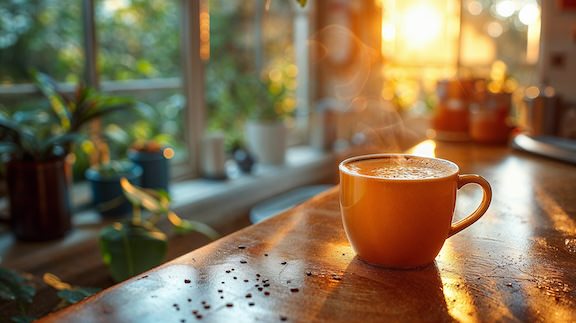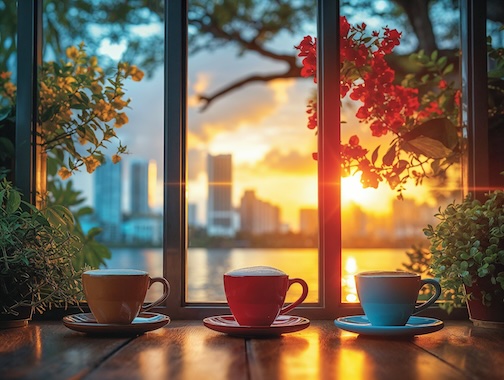Coffee, that essential beverage many of us turn to throughout the day, holds a particularly sacred place in the morning routine. A morning or breakfast coffee isn’t just about the caffeine boost; it’s a ritual that signifies the start of a new day, offering a moment of pause before the hustle begins. But is there a difference in how we should approach making our morning coffee compared to one we might enjoy in the middle of the day or night? The answer isn’t straightforward, as it intertwines with personal preferences, cultural practices, and even the science of coffee brewing.
For many, the morning coffee is often stronger and more robust. This preference isn’t just about needing a stronger kick to wake up, but also about the body’s chemistry in the morning. After waking, our cortisol levels are higher, making us naturally more alert. A strong coffee complements this natural wakefulness, providing not just energy but also warmth and comfort. In contrast, the coffee you might reach for in the afternoon or evening is often lighter. This is not just a matter of reducing caffeine intake to avoid disrupting sleep patterns, but also about the experience of enjoying the coffee itself. Afternoon and evening coffees are more about savoring the flavor, taking a moment to relax, or complementing a meal or dessert.
The method of brewing can also differ based on the time of day. Morning coffees are often prepared in a rush, with convenience taking precedence. Many households rely on automatic drip coffee makers or single-serve pod machines that can deliver a consistent cup of coffee quickly and with minimal effort. These methods are especially popular in the morning when time is of the essence, and the focus is on efficiency rather than the intricacies of the brewing process.
As the day progresses, however, coffee enthusiasts might opt for brewing methods that allow for more control over the taste and strength of the brew. Methods like pour-over, French press, or espresso machines become more appealing. These methods require more time and attention to detail, making them less suitable for the morning rush but perfect for later in the day when there might be more time to enjoy the process. The slower pace of these methods allows for a moment of relaxation and can be a delightful way to break up the day or ease into the evening.
The type of coffee beans used can also play a role in distinguishing morning from day or night coffee. A bold, dark roast with a strong flavor profile might be preferred in the morning to provide a hearty start to the day. In contrast, lighter roasts with more nuanced flavor notes might be more appreciated later on, when there’s more leisure to explore and enjoy the subtle tastes and aromas.
Culturally, the concept of morning coffee varies significantly around the world, further influencing how it’s prepared and enjoyed. In Italy, for example, a morning coffee is often a quick, strong espresso consumed standing up at a café bar, while in Turkey, the day might start with a leisurely savored Turkish coffee prepared with sugar and spices. These practices reflect not just preferences in taste and strength but also the social and cultural significance of coffee drinking at different times of the day.
While the fundamental process of brewing coffee remains consistent, the nuances of how we prepare and enjoy our coffee can vary significantly depending on the time of day. Morning coffee, with its emphasis on strength, convenience, and ritual, offers a distinct experience compared to the more relaxed and flavorful explorations typical of afternoon or evening coffee moments. Ultimately, how one chooses to enjoy coffee is a personal preference, influenced by lifestyle, cultural practices, and the body’s rhythms. But whether you prefer a strong, quick cup to start your day or a gentle, aromatic brew to wind down, coffee remains a versatile and beloved companion throughout the day’s many moments.
Please note that if you purchase from clicking on the link, some will result in my getting a tiny bit of that sale to help keep this site going. If you enjoy my work, perhaps you would consider donating to my daily cup of coffee, thank you.



